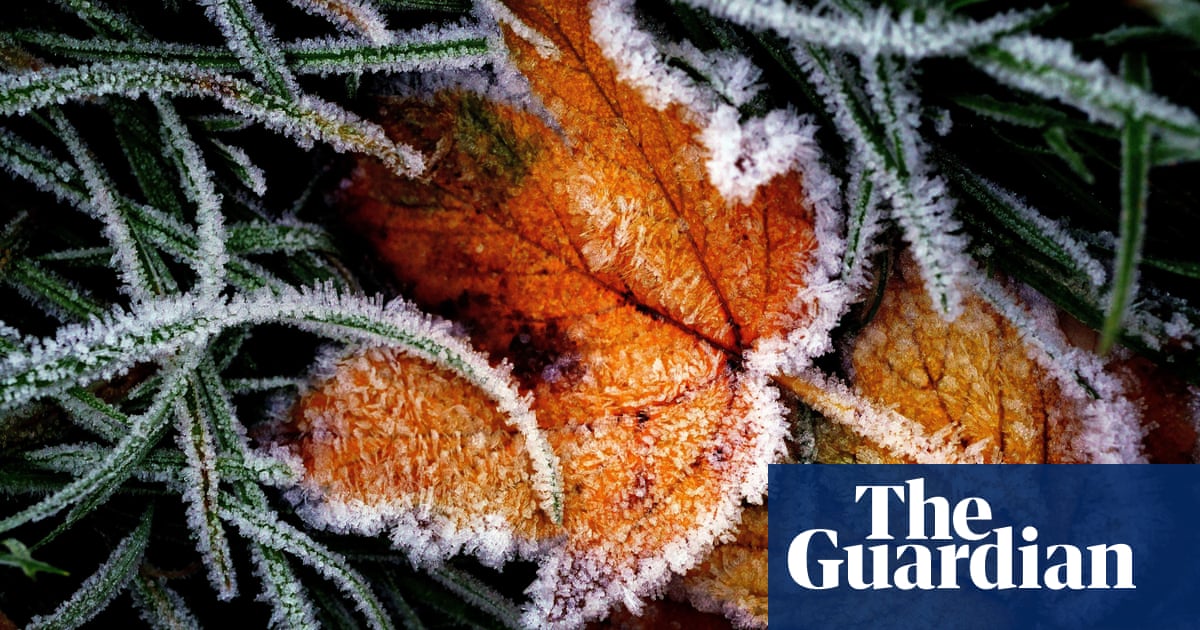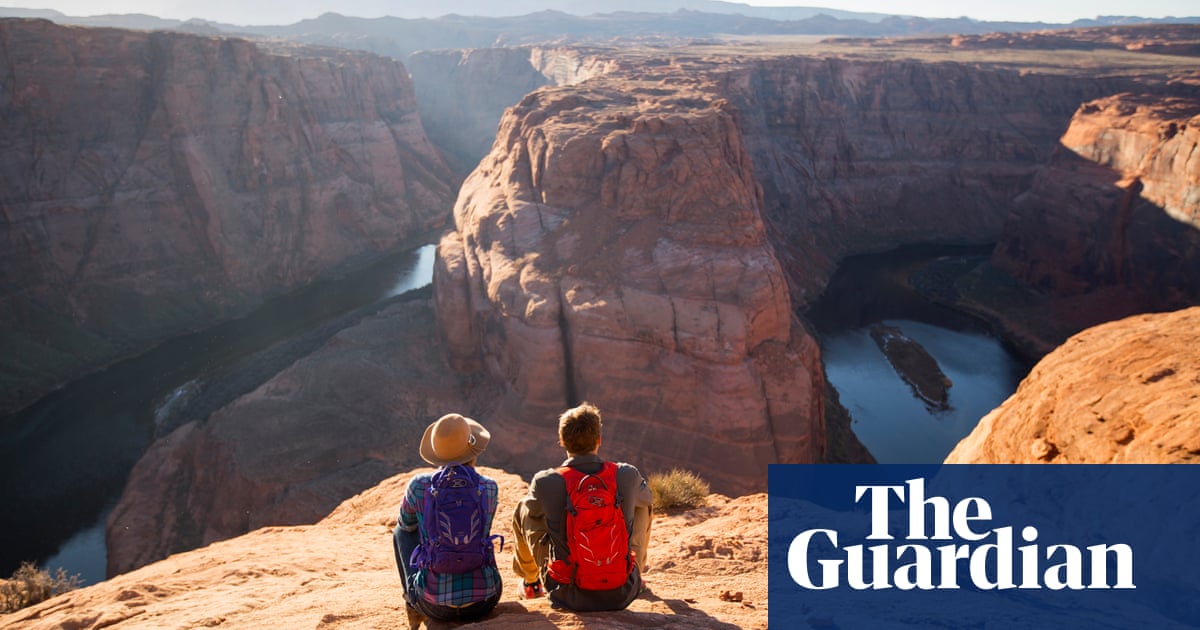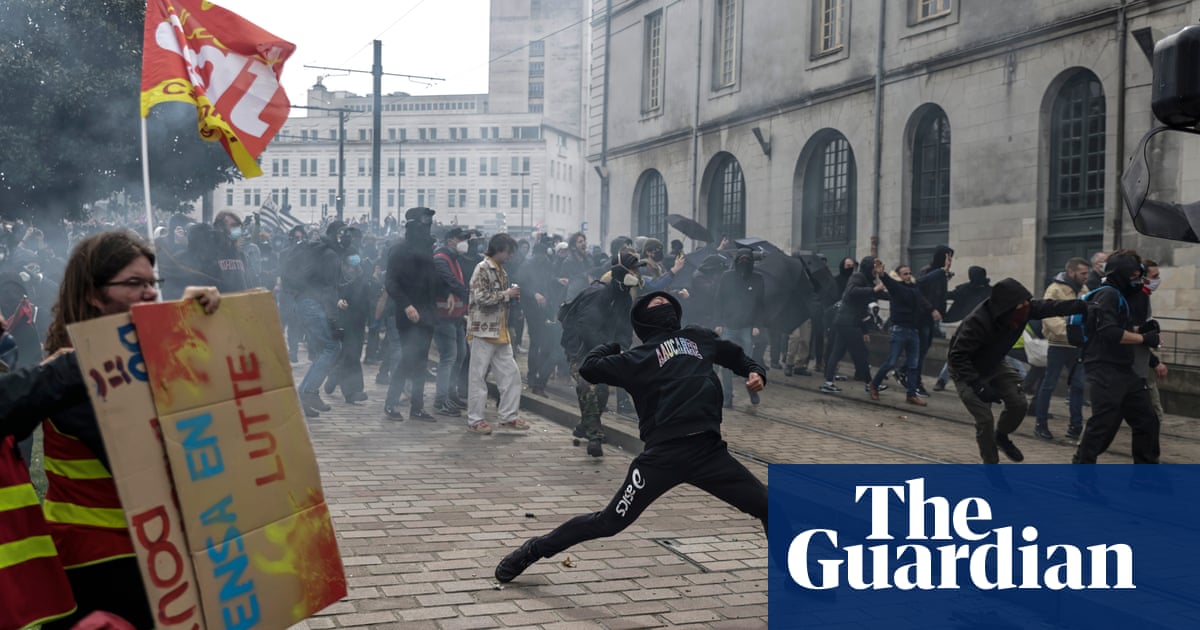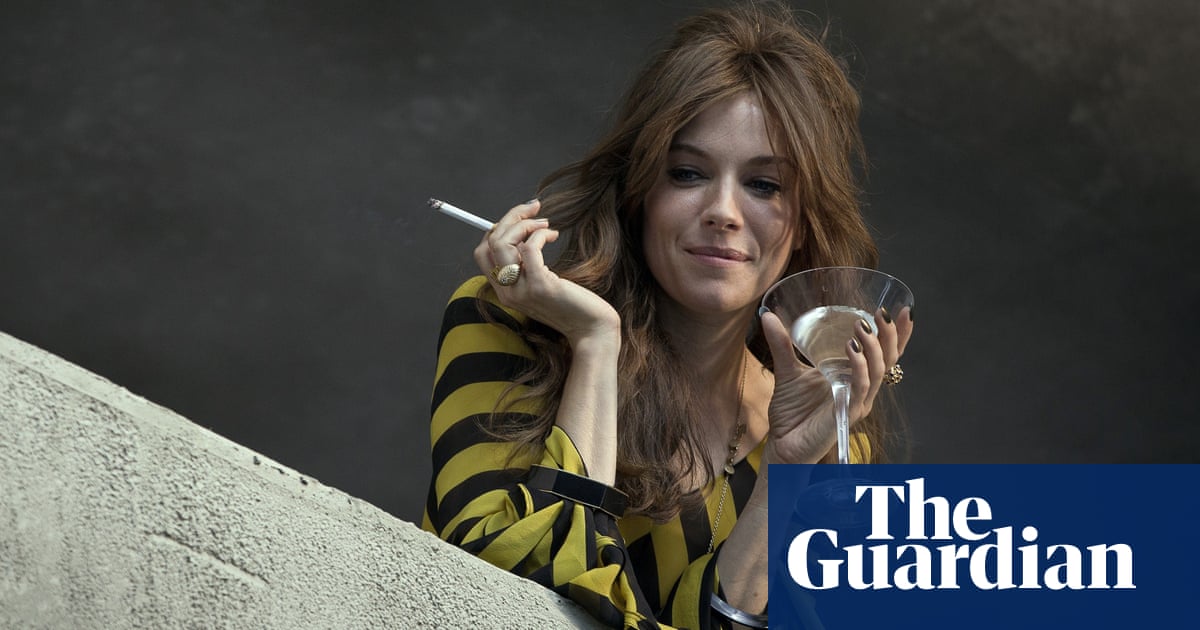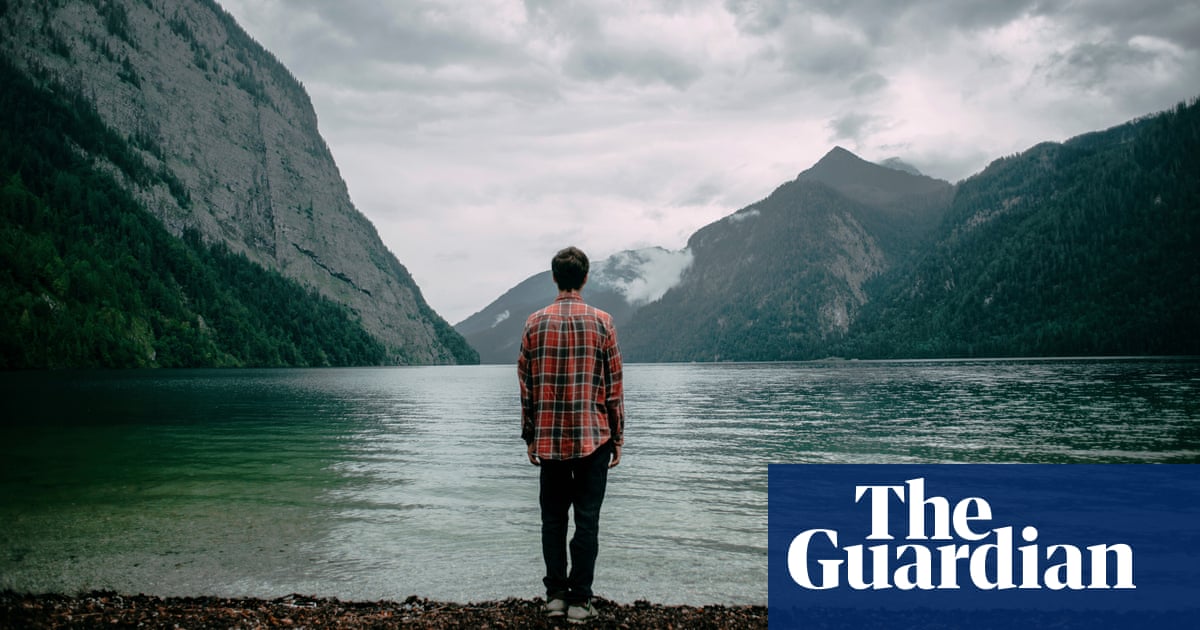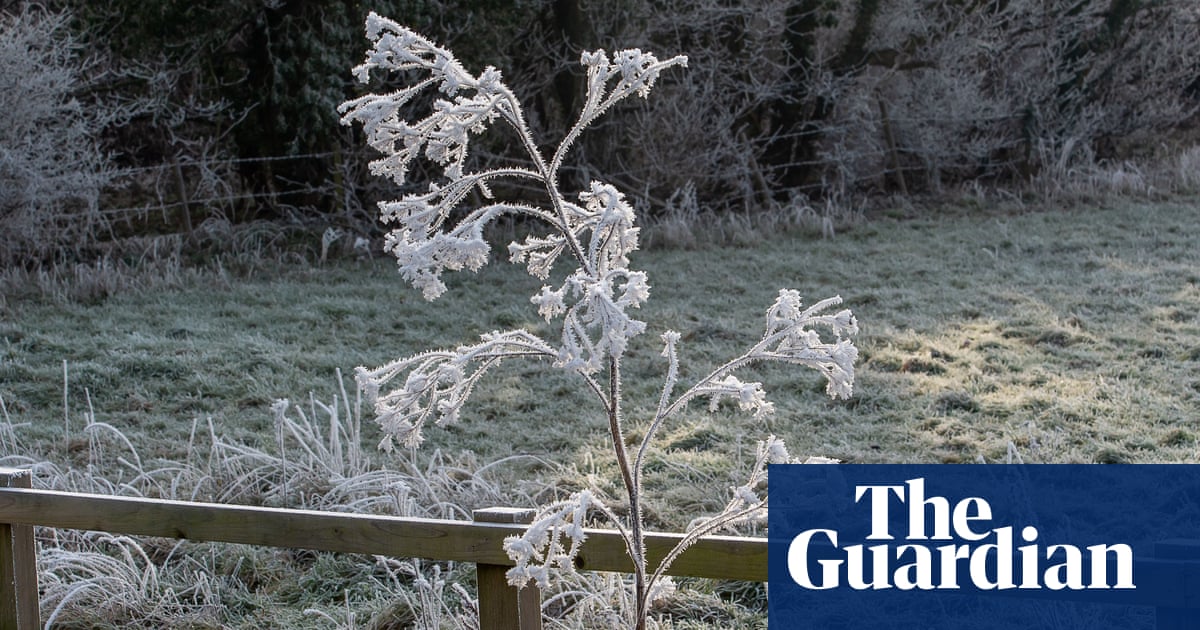
Why is frost so beautiful? Or why do we find it beautiful when essentially it is a sign that it’s too cold to go outside? Melanie de Villiers, Oxford
Send new questions to nq@theguardian.com.
Readers reply
You might think that frost is frozen water. It starts as dew then gets cold and turns to ice. This happens, but doesn’t cause the pretty stuff. Frost happens when individual molecules of water vapour are deposited directly on to a slightly cooler object.
It so happens that water molecules are bent in the middle by 104.5 degrees. This is very close to the angle at the centre of a tetrahedron (a pyramid with a triangle on every side), so they naturally form 3D structures, but with an occasional “kink” due to the maths being not quite right. MickeyFynn
Hoar frost is a type of feathery frost. The word “hoar” comes from Old English and refers to the old age appearance of the frost: the way the ice crystals form makes it look like white hair or a beard. It is formed in different conditions to your standard frost. When water vapour in the air comes into contact with solid surfaces that are already below freezing point then ice crystals form immediately. Ice continues to grow as more water vapour is frozen. On a still night, it can grow well on tree branches, where the surface temperature is unlikely to rise above zero for several hours. Why does it appear beautiful to us? Because it seems magical? It is a startling transformation of grass, leaves, branches that is so transient – the sun shines down and it is gone. dianab
Frost transforms the mundane into something different. It compels us to reappraise what we have come to take for granted and take real notice of it. It arrives overnight, and is often fleeting, meaning that we don’t have time to become familiar with it. bopsysdad
In the depths of winter, the animals of Earth spend twice the time grazing … so the artist of the land struck a deal with the moon to provide some exterior lighting. woodworm20
Today, each leaf of the corn in the fields, each twig of the trees was frosted. All glittered in the sun. The air was still, so it almost did not seem cold in bright sunshine. Geese circled overhead. The colours are simple, blue and white. The brightness is intense after mud under clouds. Don’t ask why it is beautiful, just enjoy it. Abigailgem
I reject the premise of the question where it says we should dislike frost as a sign it’s “too cold to go outside”. It’s never too cold to go outside! (Though I concede it can be too cold to stay outside for very long.) Going to the woods every day all winter in all weather, snow, sleet, mizzle or otherwise, keeps me sane. But the beauty of frost: might it have something to do with the geometrical, micro-precision of it? That’s rare in nature. I also like the sheer purposelessness of it – it serves no purpose BUT beauty. It just happens, a happy side-effect of moisture and temperature. Maybe my favourite reason for loving frost is the startle of it – it’s like a marble sculpture in the middle of a suburban sidewalk or a masterpiece painting hung on a dingy brick building wall. Beauty is at its best when it surprises us! Meg, Concord, Massachusetts
With frost, no ivy leaf or blade of grass gets missed out. Everyone gets their frosting. You can’t be too small and insignificant for frost not to notice you. Bonzetta
Waking up to a world that looks like it’s been lovingly covered in icing sugar with added sparkle, when the crystals catch the morning sun and treat you to a disco-ball performance, well, it’s like nature decided to doll up winter and throw a party. I would take frost over snow any day. ElizabethMcNab
I am surprised there is no mention of the sparkle of light, the exquisite beauty of the sculpture of the fronds created and just the overall ethereal glow of a frosty landscape at sunrise. Tedami7
In a world that is matt green in the summer and very dull brown in the winter having a bit of sparkly white is rare in nature and by comparison very pretty. ILikeChips
There’s a lot of evidence that humans find particularly naturally pleasing sights that incorporate a mix of large- and small-scale structure, especially if the two are related somehow (such as repeated use of the golden ratio at different scales) – hence many, say, preferring classical architecture to brutalist (which is hallmarked by a complete, deliberate absence of small-scale, decorative detail). Frost (as well as a lot of plants) exhibits such a fractal-like, repeating, spidery structure, at very large scale, right down to individual crystals, so fits this natural predilection well. HaveYouFedTheFish
Many years ago while still a lad, I walked into my local wood during a very hard all-day frost. To call the scene before me stunningly beautiful would be an injustice. Trees became unrecognisable from their usual glorious shapes; glowing and sparkling in the sunlight, they had taken on an unusual beauty that I had not seen before as a young lad! Sitting at the foot of one ancient beech listening to the silence of the day, other than the occasional sound of a rabbit or hare running on the frozen leaf litter, was an amazing experience, and one I remember still these 70 years later – truly a magical frosty sight. MOORCOCK02
In Russia, Ded Moroz, literally Grandfather Frost (although, over time, this pre-Christian spirit has morphed into father Christmas) … In Germany, Frau Holle (and regionally Holla), Old Mother Frost. Again, a pre-Christian mythological spirit. In Finland, Pakkasukko, Father Frost. In Britain, Jack Frost … you get the picture. All areas of the north have a winter spirit, who emanates from prehistory, who materialises in the form of frost. Some are feared, some revered, but all are deeply embedded in the culture and inspired by the beauty of frost. woodworm20
In prehistoric times some people found frost cold and ugly. They stayed in bed and failed to gather enough firewood and food. They died at a much higher rate than frost lovers who loved to get out and at it on cold, frosty mornings. loopine
Because it sparkles like diamonds. lisamarie3
It makes everything glittery. It adds beauty to the grey. Also when it’s frosty, the atmosphere is drier and clearer, and the cold tolerable. It has stillness. mariarima
I guess frost appears when nights are clear. This makes it more likely that the days are also clear, ie sunny. Which makes frost appear more beautiful. gotet
The sun is likely to be lower in the sky, so you get the play of light and shadow as well. jno50
Simply put, it’s like a dusting of icing sugar on a cake. Just elevates everything and gives definition and structure. Also makes the colour of everything muted, which I guess is easier on the eye, so more pleasant to look at for longer? Or perhaps because it reflects light, which makes everything sparkle. AyydotV
Appreciate it while it lasts. There are stories aplenty about harsh frosts in yesteryear where I live, but in the nearly nine years I have lived here we have only had one mild frost. Climate change is going to see fewer and fewer frosts over the globe. So make the most of them while you can. CommanderGreg
Why is frost beautiful? It is like watching evolution in action: ice crystals reaching out towards the plant kingdom imitating the next stage of development. Look at the frost on glass, how it resembles leaves of trees. RainTree2019
I was out walking with the dog on Friday. Crossing the fields was stunning. It was cold, but the sky was clear. Frost was lurking in the hedgerows, sparkling and beautiful. I picked up a piece of frost-encrusted bracken and it just crumbled away. Squeakysquirrel
The answer is not in the frost, but in us. It shows that what delights us is not only what will satisfy the basic needs of food and sex. You could ask, what need does this perception satisfy? When we spend so much time indoors, open spaces are beautiful. When it is so dark, the brightness is beautiful. It could be linked to finding food when we see well. It could be a more subtle need. Abigailgem
On a blue and silver day, snow-capped ranges in the distance, I walked through a New Zealand orchard. I reached into a tree and picked a red apple entirely encased in ice, bit into it, and it was crisp and sweet. Suddenly I knew the apparently insightful moment of perfection had crystallised into something I would never forget. Koninist
Frost seems to stop time. Low-hanging branches that tend to sway or lollop lightly in the breeze now rest as motionless as a surgeon’s hands; leaves that usually flutter coquettishly have become brittle and rigid and look irresistibly breakable. The ground is hard – if I close my eyes, it feels as though I am treading a gnarly, volcanic path. Frost can stop time, but only briefly. In 20 minutes, when I return home, those tiny white bristles on the leaves and the low-hanging branches will have started to melt and stud the icy path with drops of water. The sun makes the frost beautiful, but at its own cost. The grass will have begun to emerge in its true, verdant splendour and as the shadow of the garden wall shrinks, so too will the frost recede, like a sombre tide. So, the frost represents transience as much as it represents the stopping of time. Sophie Holloway, Suffolk




